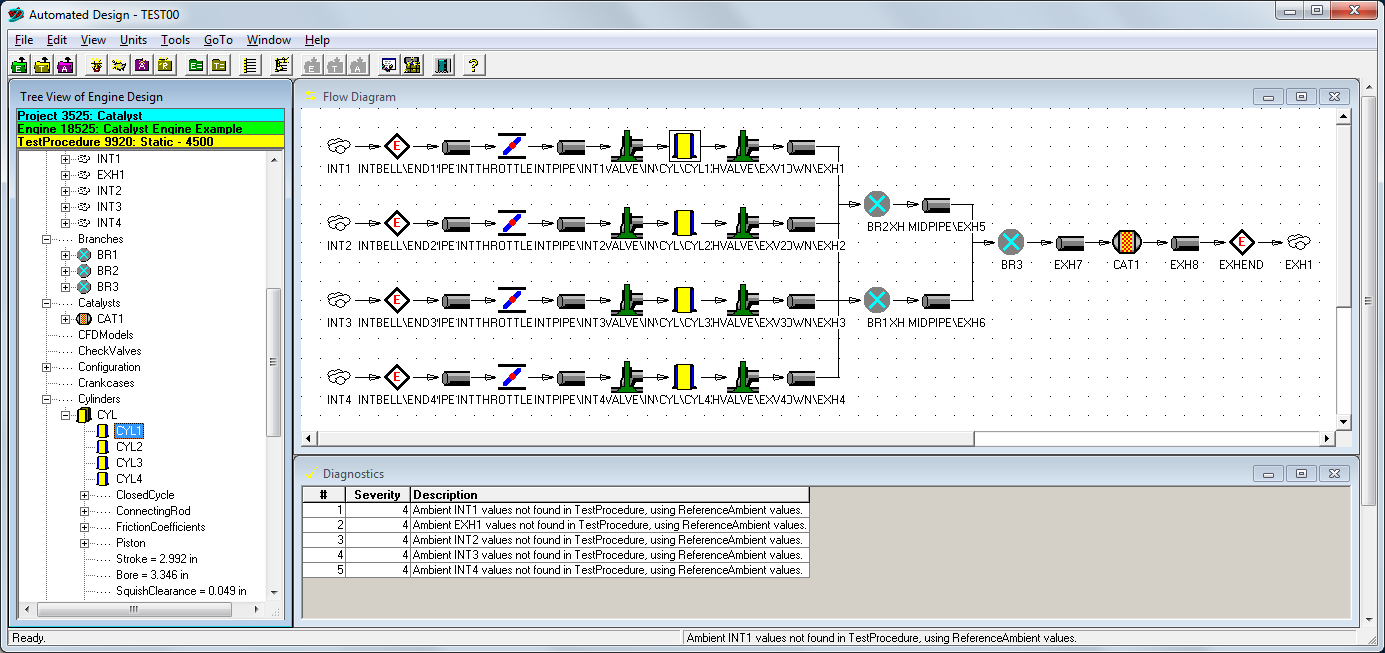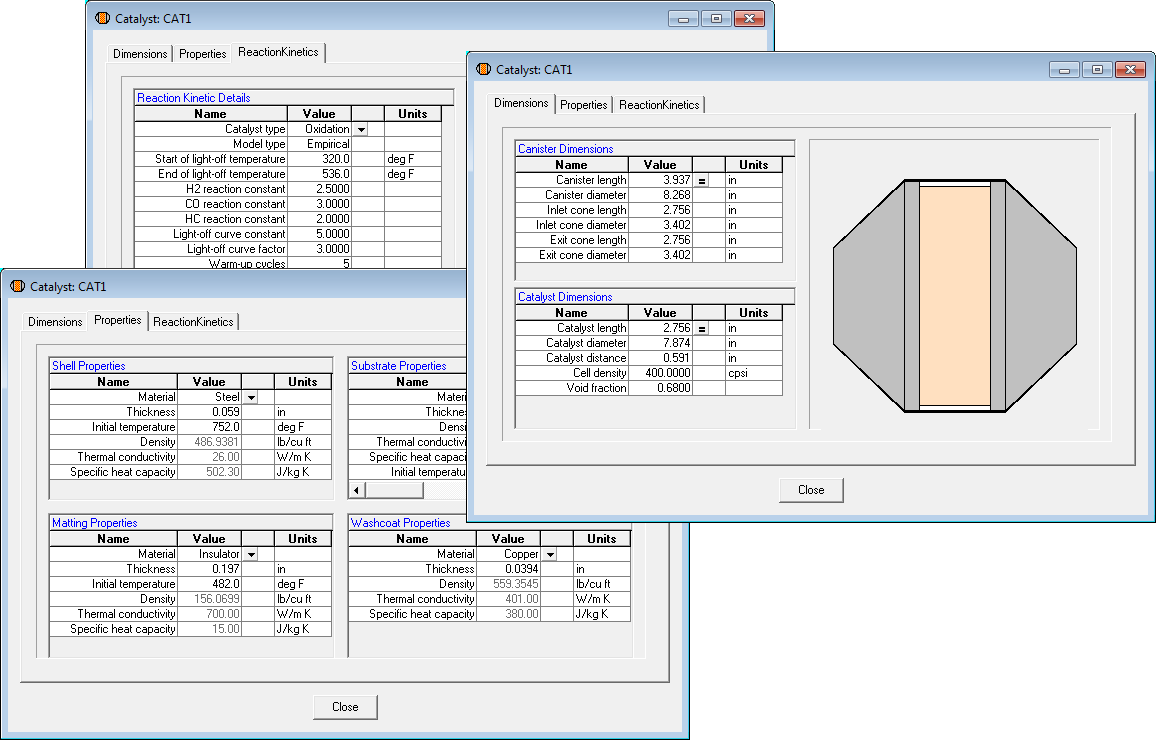Catalyst
Exhaust gas after-treatment using catalytic converters is commonplace on most modern engines. Engine designers must be able to assess the influence that parameters such as catalyst type, location or chemical composition can have on:
- The gas exchange processes through the engine.
- The thermodynamics of the exhaust system.
- The emission characteristics of the engine at part and full load.
Engine cycle simulation can be a valuable tool to help answer these questions provided that a realistic and accurate model of the catalyst can be defined. OPTIMUM Power Technology’s Virtual Engines software now offers an advanced catalyst module designed to meet these requirements.
Multiple catalysts may be defined using:
- Physical dimensions
- Material properties
- Reaction kinetic model
Physical dimensions of the catalyst are specified using industry standard values such as cell density and void fraction. The catalyst brick and canister are automatically translated into Virtual Engines, reducing user effort.
Material properties for the main components of the catalyst such as matting and substrate can be selected from a materials database or added as custom materials by the user.
Catalyst operation is a complex process, requiring definition of the reaction kinetic equations that govern the conversion rates of fuel and exhaust gases. Virtual Engines offers several levels of detail for specifying the conversion process:
- Empirical model based on measured light-off characteristics.
- 3-equation model.
- 5-equation model.
- 13-equation model.
Powerful post-processing capabilities within Virtual Engines allow assessment of the catalyst operation.





